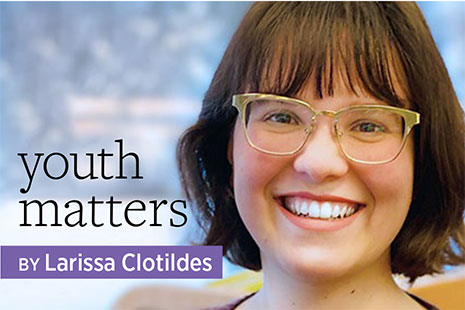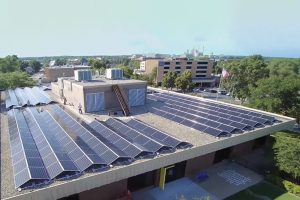
Crafts: the backbone of children’s events everywhere. There’s nothing quite like gluing pipe cleaners and pompoms, cutting paper and coloring, wrapping and taping, painstakingly creating … and then throwing these masterpieces in the trash.
I am not denying the educational value of crafts. They stimulate creativity, develop fine motor skills, and engage multiple senses in a learning experience. But I challenge myself to find activities that do not produce single-use waste, without sacrificing everything that makes crafts so great. I use the five Rs as my baseline:
Refuse. Reject programs and activities that produce waste as often as you can. I don’t recommend this for every program, but I try to do one zero-waste event per season. In the past I have organized a parachute party, a singing workshop with a local voice teacher, and a nature-walk storytime. The storytime was a great way to immerse ourselves in the natural world and appreciate the point of “going green” in the first place.
Reuse. Find programming materials that can be reused. Dig through the storage room before you buy anything new. I think this is the best option for making long-term programming sustainable and interesting because it’s easiest on the organizer.
Set out chalkboards or whiteboards instead of coloring sheets. Pool noodles can be turned into a game of “the floor is lava” by scattering them across the floor. Stock up on reusable decorations that suit a variety of programs—such as colored tablecloths, twinkle lights, and disco balls—instead of single-use streamers and balloons. Beanbags, Hula-Hoops, and jump ropes are reliable offerings and tend to engage the more athletic kids, who sometimes don’t think the library is for them.
Repurpose. This is my favorite R. I love finding new uses for old things, and Pinterest is a wonderful source of inspiration.
While cleaning, we found boxes of popsicle-stick and paper puppets from former programs that we doubted would get reused. Since it was the beginning of camping season, we handed them out as kindling instead of trashing them.
Another idea is to check with staffers who receive and process deliveries of new books to see if they have leftover bubble wrap. We lay it on the floor, crank up some tunes, and throw a dance party for the kids.
Recycling is still waste, even if it enjoys a reputation as ‘good’ waste.
Reduce. This is my final preferred option. Don’t feel guilty if you really want to do crafts—they are important and sometimes the most fitting activity. Just take steps to reduce waste, such as conducting activities with two or three materials (rather than dozens) or limiting the number of visible materials and refilling the box as needed.
Activities that use bubbles or baking soda and vinegar leave behind containers that become recyclable waste. If materials are biodegradable, all the better; my favorite summer reading program activity was making binary-coded bird feeders out of cereal.
Recycle. This is my last resort. Recycling is still waste, even if it enjoys a reputation as “good” waste. Consider designating a recycling station where people can leave their creations if they do not want to bring them home. That way, pieces can be reused or repurposed before being discarded.
Avoid creating nonrecyclable waste. The biggie for me is slime, essentially a lump of plastic. Substitute play dough or oobleck, both of which are biodegradable.
Finally, talk about waste when you run a program. Confer with coworkers about what you can do as a group to produce less. Consult with supervisors about getting reusable replacements for single-use supplies and adequate recycling bins. And be sure to explain to kids and their caretakers why you chose certain activities, especially if they ask. As educators, we are in a position to help families understand that they don’t have to choose between fun, learning, and sustainability.
Adapted from “Reducing Waste in Children’s Programming” (Jbrary, Dec. 4, 2019).


